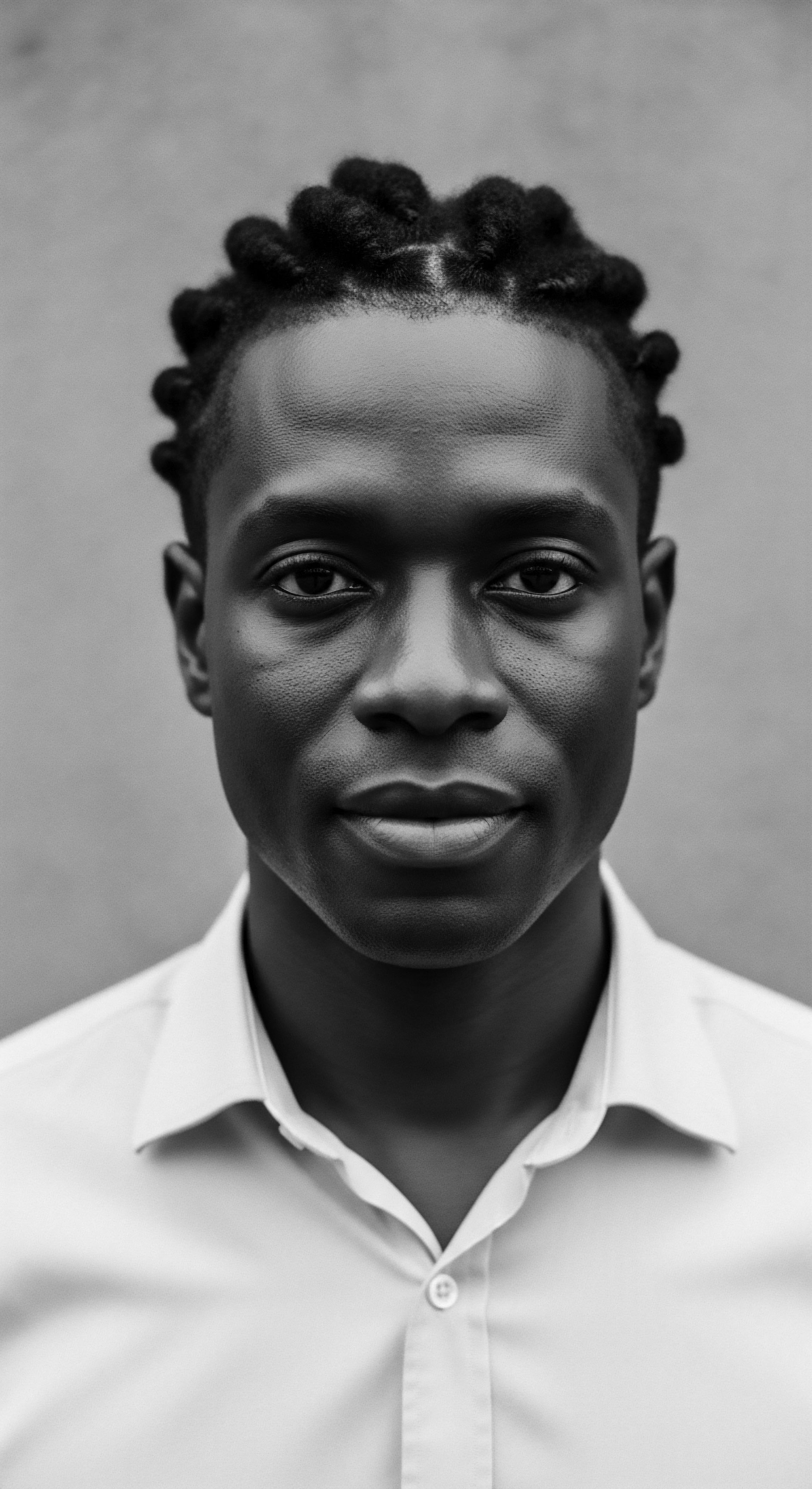
Fundamentals
The intrinsic concept of ‘African Beauty’ stands as a profound testament within Roothea’s living library, not merely as a descriptor of physical attractiveness, but as an expansive declaration of identity, resilience, and ancestral wisdom. Its foundational meaning extends far beyond superficial adornment, delving into the very biological architecture of textured hair and the ancient cultural reverence it has always commanded. From the elemental biology of the strand itself, we discern a language of unparalleled diversity and strength, a genetic inheritance that speaks volumes of adaptability across millennia.
This initial exploration invites us to consider African Beauty as an inherent quality, a deeply rooted aesthetic that celebrates the natural, unyielding magnificence of hair that coils, kinks, and waves with extraordinary vitality. It is a beauty born of the land, shaped by the sun, and honored through generations of careful stewardship. Understanding this foundational layer requires a shift in perspective, moving away from Eurocentric ideals to appreciate the distinct splendor woven into every helix of textured hair. This is where the ‘Soul of a Strand’ ethos begins its whisper, reminding us that each hair follicle carries an echo of its origin, a memory of its journey.
African Beauty, at its core, represents an inherent, deeply rooted aesthetic celebrating the natural magnificence of textured hair, a profound declaration of identity and ancestral wisdom.
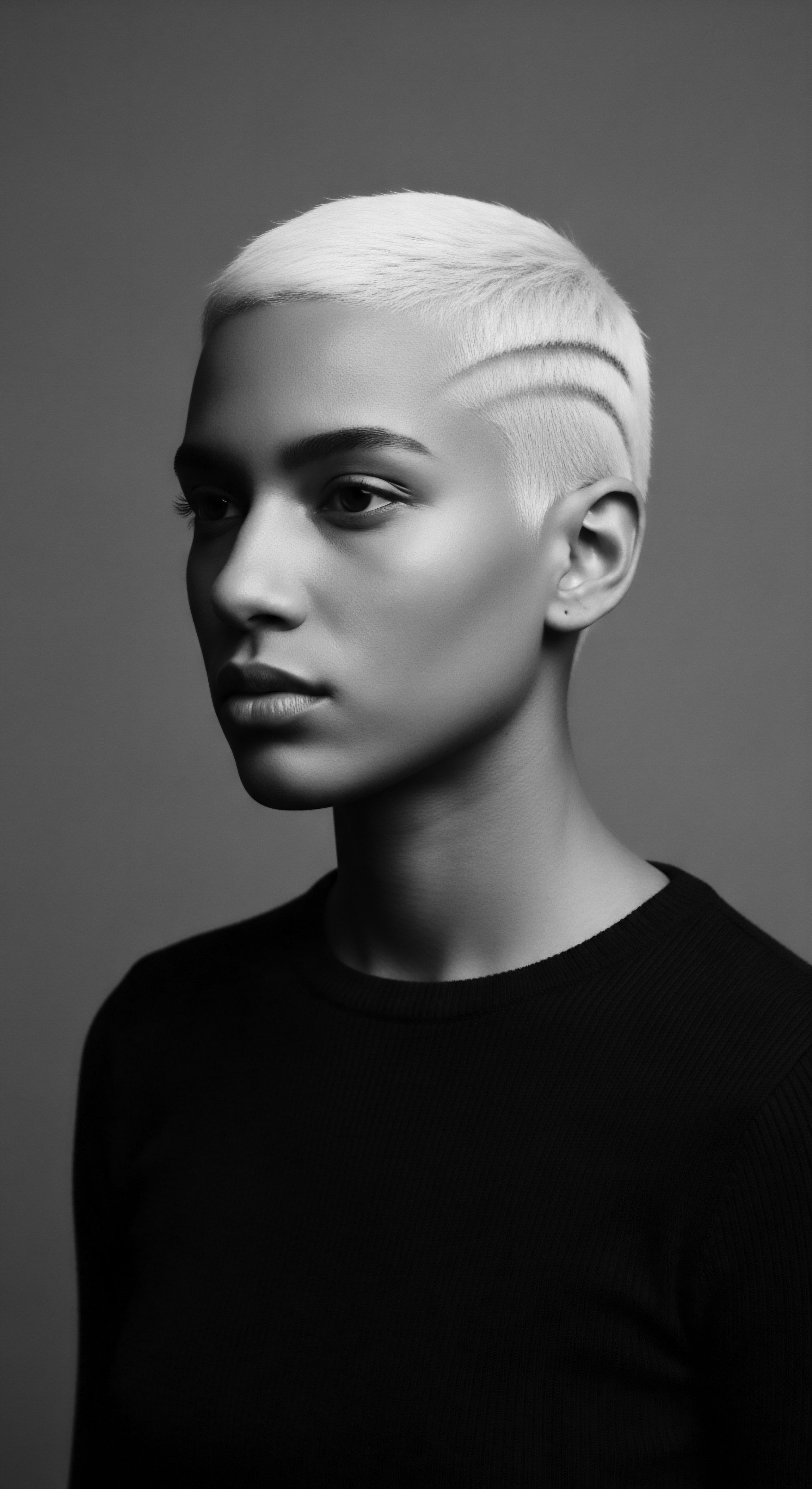
The Hair’s Own Song
Within the physiological realm, the distinctiveness of African hair textures is undeniable. Unlike straight or wavy hair, individual strands often possess an elliptical or flattened cross-section, contributing to their unique curl patterns. These patterns range from loose curls to tightly coiled strands, often categorized by systems that attempt to classify their distinct characteristics. The distribution of disulfide bonds within the hair shaft, along with the way the cuticle layers are arranged, gives textured hair its characteristic volume, spring, and sometimes, its delicate nature.
This inherent structure, a biological marvel, allows for an incredible array of styles and expressions, acting as a natural crown. The varied porosity and density also shape its unique care requirements, necessities understood intuitively by ancestors.
The biological particularities of textured hair are not deficiencies but rather evolutionary adaptations, each contributing to its unique aesthetic and functional capabilities. The tightly coiled nature can offer a natural barrier against the sun’s intense rays, a protective canopy for the scalp. This natural shielding mechanism, often overlooked in contemporary discussions of hair, underscores a deeper, ancestral connection to the environment. The robust nature of these strands, despite their perceived fragility when dry, speaks to an inherent strength that has allowed them to endure through diverse climates and conditions, a testament to the enduring vitality of African heritage.

First Strands of Meaning
From the earliest epochs, hair held a paramount position within African societies, serving as a powerful visual language. Before the advent of written script in many communities, intricate hairstyles communicated volumes about an individual’s status, age, marital eligibility, tribal affiliation, and even spiritual devotion. The act of hair styling was often a communal ritual, a moment of intergenerational knowledge transfer, where younger hands learned the ancestral techniques from elders. This was not merely about aesthetic appeal; it was about the tangible expression of one’s place within the collective, a visible manifestation of belonging.
The significance of hair in these contexts was so profound that it transcended the physical, often touching upon the spiritual. Among many West African cultures, hair was considered the closest part of the body to the divine, a direct conduit to the spiritual realm. This reverence imbued every strand with sacredness, influencing how it was cared for, adorned, and even disposed of. The practices surrounding hair were thus deeply embedded in a holistic worldview, where physical appearance, community bonds, and spiritual connection were inextricably linked.
- Adornment ❉ Hair was frequently embellished with cowrie shells, beads, gold, and other natural elements, signifying wealth, status, or spiritual protection.
- Communication ❉ Specific braiding patterns or shaved designs conveyed messages about a person’s life stage, social standing, or tribal identity.
- Ritual ❉ Hair styling often formed part of rites of passage, ceremonies, and daily communal gatherings, strengthening social cohesion.
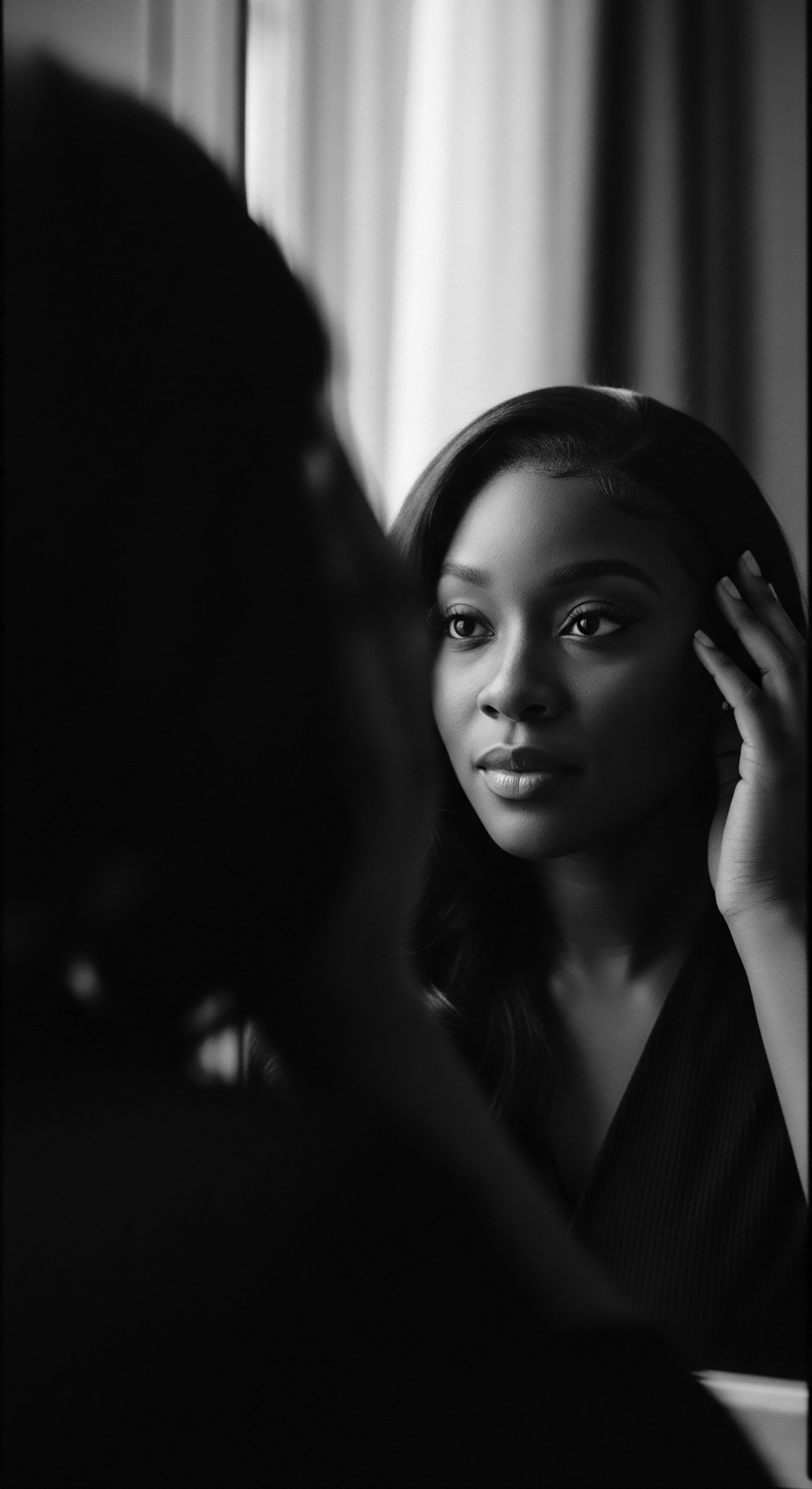
Intermediate
Moving beyond the foundational understanding, the intermediate interpretation of ‘African Beauty’ broadens to encompass its dynamic role as a living expression of cultural identity, communal strength, and unwavering resilience. It is here that the narrative of textured hair care evolves from simple biological fact to a vibrant chronicle of ancestral practices, passed down through the generations like precious heirlooms. This deepened perception recognizes African Beauty not as a static ideal, but as a fluid, adaptive concept that has navigated the currents of history, always retaining its core essence. The wisdom held within traditional ingredients and care rituals speaks to an enduring connection to the earth and its bounty, a heritage of self-sufficiency and profound respect for natural processes.
The historical trajectory of African Beauty, particularly concerning hair, reveals a story of both celebration and challenge. The transatlantic slave trade, a period of immense disruption, attempted to strip individuals of their cultural markers, including their hair traditions. Yet, even in the face of unimaginable adversity, ancestral practices persisted, often adapted and innovated under duress. This period underscores the remarkable resilience embedded within the concept of African Beauty; it became a clandestine language, a subtle act of defiance, and a quiet preservation of identity.
African Beauty, in its intermediate scope, embodies a dynamic cultural identity, communal strength, and enduring resilience, a testament to ancestral practices persisting through historical currents.
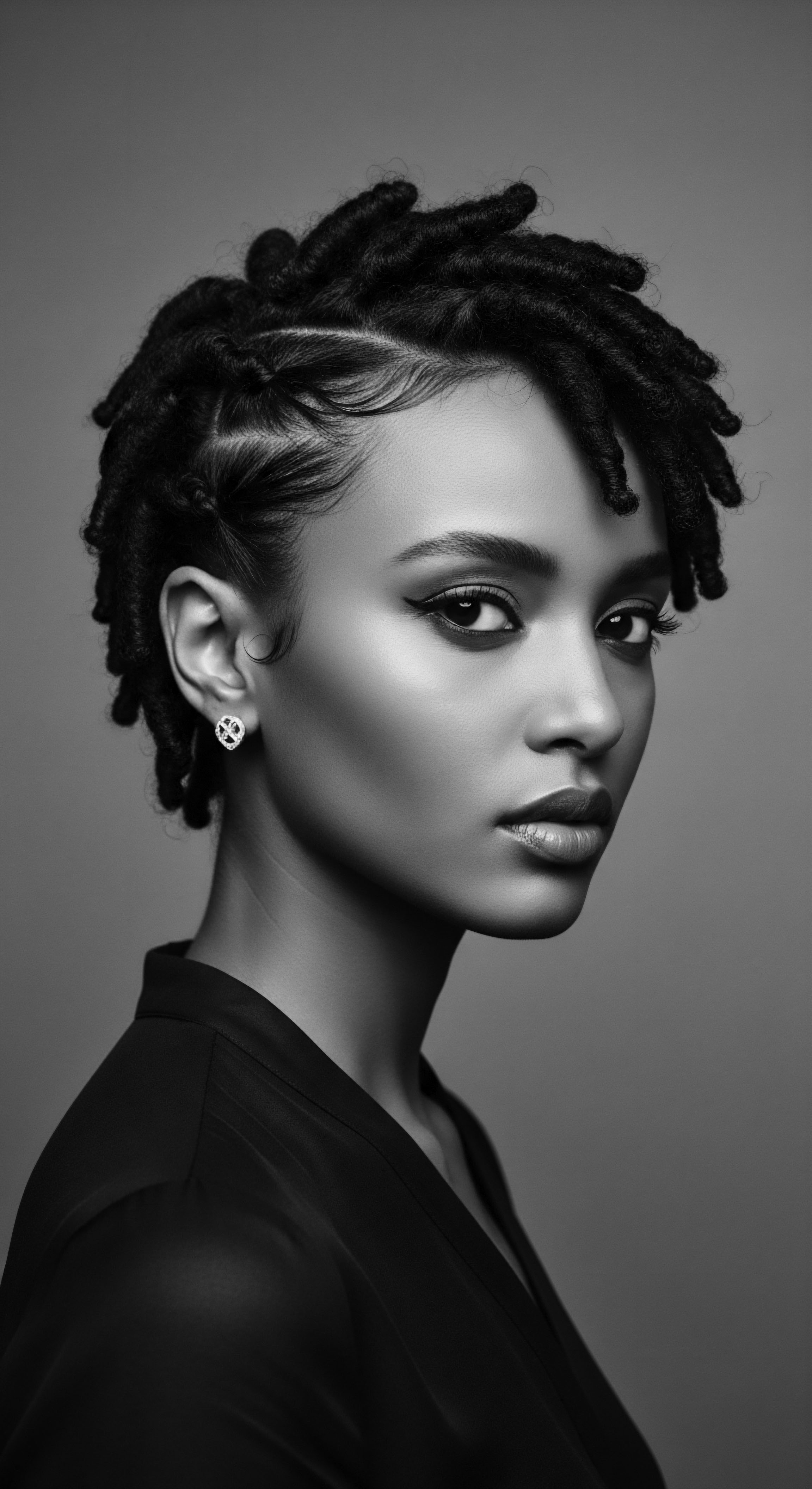
The Living Archive of Adornment
Ancestral knowledge systems regarding hair care were sophisticated and deeply attuned to the natural environment. Indigenous plants, oils, and minerals were meticulously selected for their nourishing and protective properties. For instance, the widespread use of Shea Butter (from the Vitellaria paradoxa tree) across West Africa for centuries is a testament to its emollient and healing qualities for both skin and hair.
Similarly, Black Soap, often made from plantain skins, cocoa pods, and palm oil, served as a gentle yet effective cleanser, respecting the hair’s natural moisture balance. These practices were not random acts but carefully observed traditions, honed over countless generations, reflecting a deep ecological understanding.
The preparation and application of these ingredients were often communal affairs, fostering bonds and transmitting knowledge. Children watched their mothers and grandmothers, learning the rhythm of braiding, the scent of the oils, and the stories that accompanied each strand. This collective engagement ensured the continuity of cultural memory, transforming routine care into a ritualistic reaffirmation of heritage. The beauty was not just in the outcome, but in the shared experience of creation and connection.

Echoes of Resilience ❉ Hair as a Silent Language
During periods of immense oppression, particularly the transatlantic slave trade, the deliberate defacement of African hair became a tool of dehumanization. Yet, enslaved Africans found ingenious ways to maintain and adapt their hair practices, transforming them into symbols of resistance and coded communication. Braids, for example, were sometimes used to map escape routes, with seeds or rice concealed within them for sustenance during arduous journeys. This transformation of hair from a marker of cultural pride to a clandestine tool of survival speaks volumes about the indomitable spirit that defines African Beauty.
The preservation of these practices, however fragmented, laid the groundwork for future generations to reclaim and re-celebrate their textured hair. The memory of these ancestral acts, though often unspoken, contributed to a collective understanding that hair was not merely an aesthetic feature, but a profound repository of history, dignity, and enduring spirit. The simple act of tending to one’s coils became an act of defiance, a quiet assertion of self in a world that sought to deny one’s humanity.
| Traditional Ingredient/Practice Shea Butter (Vitellaria paradoxa) |
| Ancestral Significance Nourishment, protection from sun, healing for scalp ailments, used in ceremonies. |
| Contemporary Relevance/Scientific Link Rich in fatty acids (oleic, stearic), vitamins A and E; provides deep moisture, anti-inflammatory properties, UV protection. |
| Traditional Ingredient/Practice African Black Soap |
| Ancestral Significance Gentle cleansing, purification, made from natural ash and oils. |
| Contemporary Relevance/Scientific Link Saponified plantain skins and cocoa pods create a mild, pH-balanced cleanser; effective for scalp health without stripping natural oils. |
| Traditional Ingredient/Practice Chebe Powder (Croton zambesicus) |
| Ancestral Significance Hair strengthening, length retention, traditionally used by Basara women of Chad. |
| Contemporary Relevance/Scientific Link Contains alkaloids and saponins; coats hair strands, reducing breakage and promoting retention, supporting hair growth. |
| Traditional Ingredient/Practice Kukui Nut Oil (Aleurites moluccanus) |
| Ancestral Significance Moisturizing, soothing for scalp irritation, traditional Polynesian and African diaspora use. |
| Contemporary Relevance/Scientific Link Lightweight, non-greasy, high in linoleic and alpha-linolenic acids; penetrates hair shaft for hydration and scalp health. |
| Traditional Ingredient/Practice These traditional elements highlight a continuous lineage of knowledge, where ancient wisdom finds validation in modern scientific understanding, bridging past and present in hair care. |
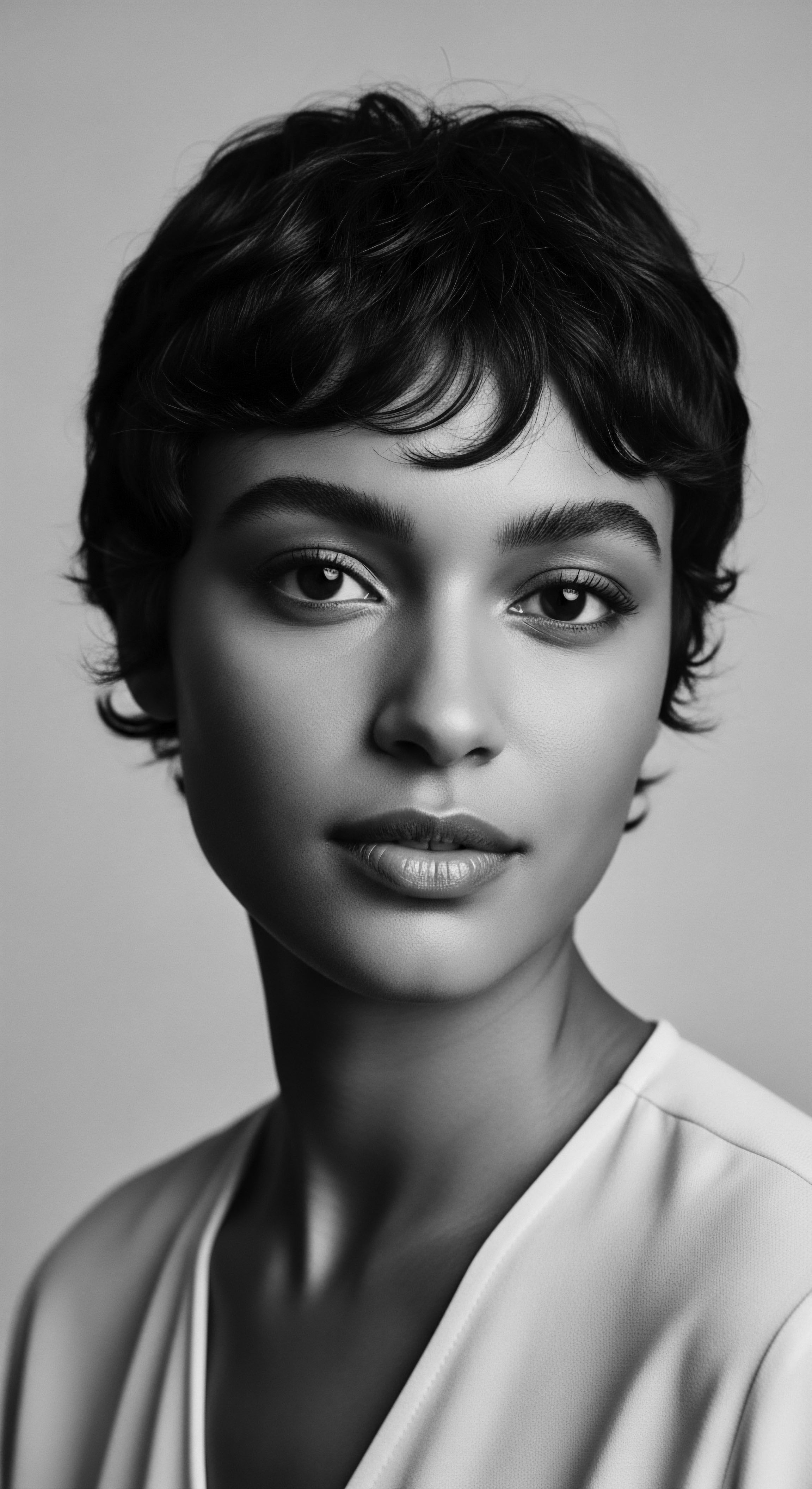
Academic
The academic elucidation of ‘African Beauty’ posits it as a complex, dynamic socio-cultural construct, profoundly intertwined with biological uniqueness, spiritual resonance, and a contested historical narrative. It is a concept that defies simplistic categorization, instead demanding a rigorous, interdisciplinary examination that traverses ethnobotany, cultural anthropology, the psychology of identity, and the sociology of appearance. From this scholarly vantage point, African Beauty is not merely a descriptive term for an aesthetic preference; it is a declaration of ontological significance, a visible manifestation of being that has been shaped by, and in turn, has shaped, the collective experiences of people of African descent across the globe. This academic lens allows for a granular inspection of how inherited biological traits of textured hair have been imbued with layers of cultural meaning, becoming potent symbols of resistance, community, and self-affirmation.
The scholarly discourse often grapples with the inherent paradoxes within this concept ❉ the celebration of a natural state that has historically been demonized, the assertion of autonomy in a context of historical subjugation, and the re-inscription of sacredness onto a feature once deemed “unruly” or “unprofessional.” The academic approach seeks to deconstruct these layers, revealing the intricate mechanisms through which beauty standards are formed, imposed, and ultimately, challenged. It requires a deep dive into the semiotics of adornment, understanding how hair, as a primary canvas, communicates complex social, political, and spiritual messages within and beyond African and diasporic communities.
African Beauty, academically defined, is a complex socio-cultural construct interwoven with biological uniqueness and spiritual resonance, a contested historical narrative asserting identity and resistance.
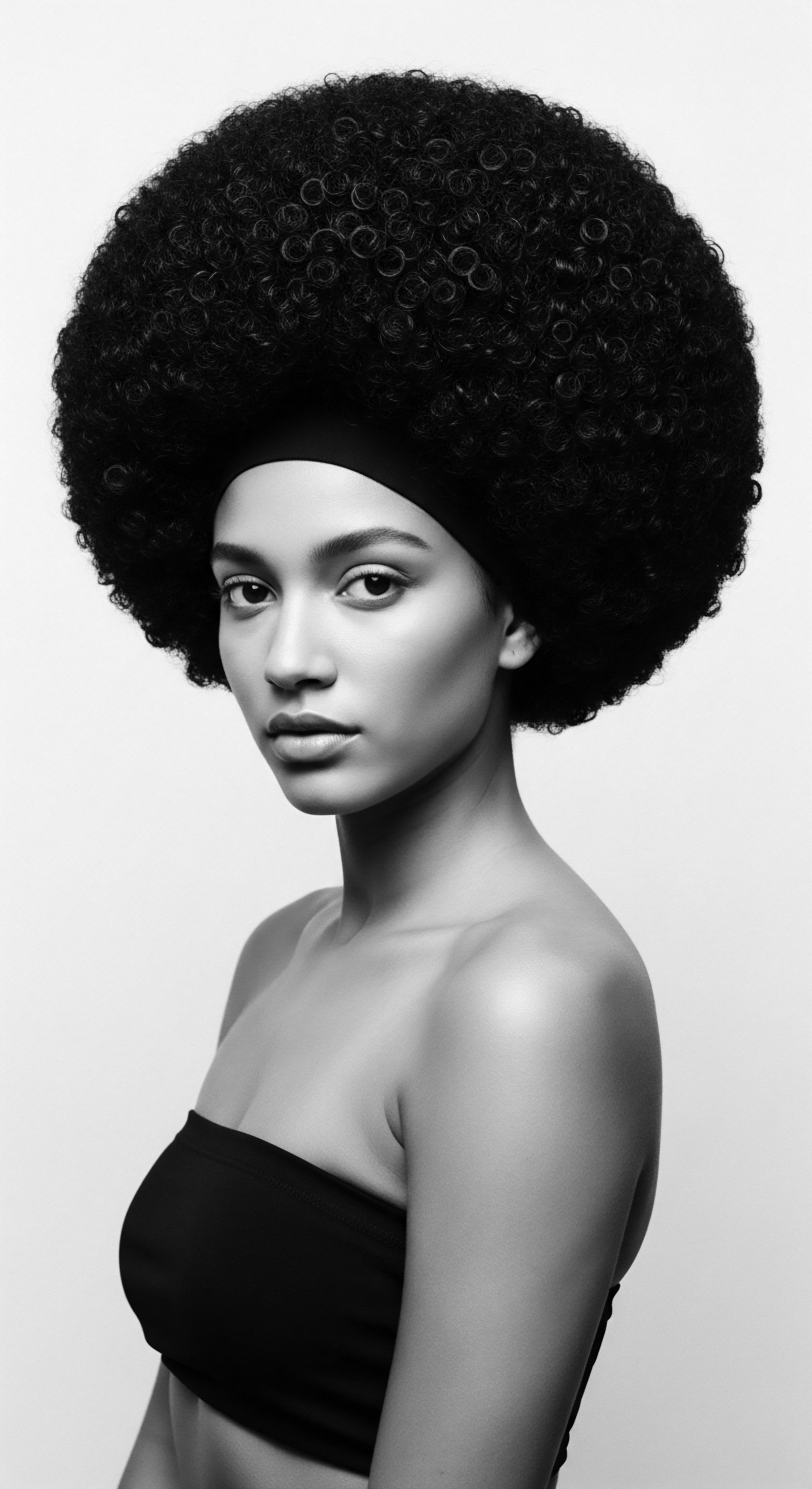
Ontology of Adornment ❉ Hair as a Spiritual Conduit
Within numerous traditional African cosmologies, hair transcends its biological function to become a sacred extension of the self, directly connected to one’s spiritual essence and destiny. The Yoruba concept of ori, for example, illustrates this profound connection. Ori, literally meaning ‘head’ but conceptually referring to one’s inner head or spiritual destiny, is considered the seat of one’s consciousness, personality, and destiny. Hair, as the crowning glory of the ori, becomes a tangible manifestation of this spiritual force.
The care, styling, and adornment of hair were thus not superficial acts but deeply ritualistic practices aimed at aligning oneself with their ori and inviting blessings. This is exemplified by the meticulous attention paid to head wraps and elaborate hairstyles in ceremonies, each choice a prayer, a declaration, or a protective ward.
This spiritual reverence is not unique to the Yoruba. Across various African societies, from the Himba people of Namibia, whose otjize mixture of butterfat, ochre, and herbs protects their hair and skin, to the Fulani, whose intricate braids often include family heirlooms and cowrie shells, hair is inextricably linked to spiritual well-being and communal identity. These practices underscore a worldview where the physical and spiritual realms are not separate but fluidly interconnected, with hair serving as a vital bridge. The knowledge of specific herbs, oils, and styling techniques, passed down through oral traditions, constitutes a vast ethnobotanical and spiritual library, each practice imbued with centuries of collective wisdom.
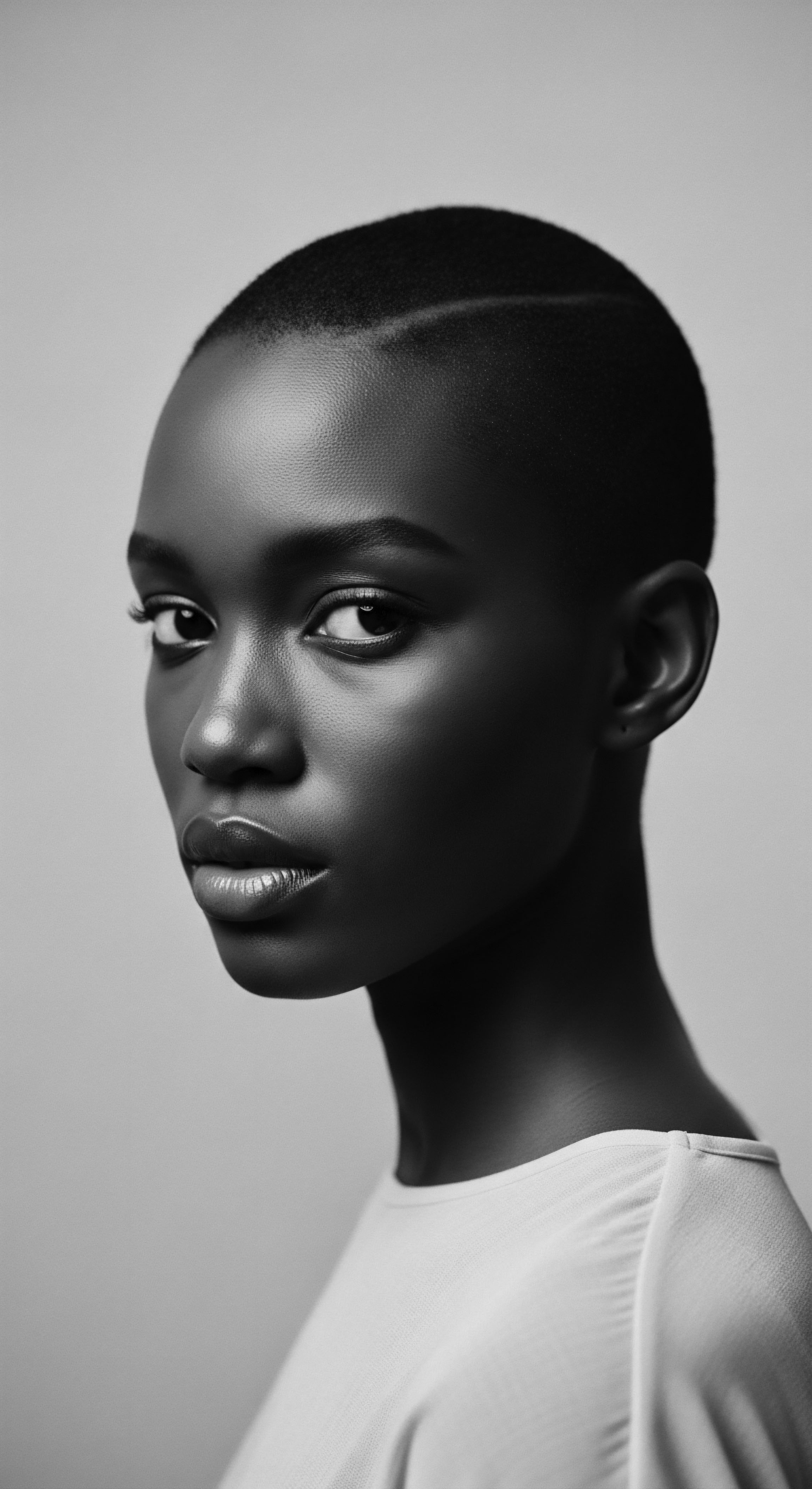
The Semiotics of Strands ❉ Hair as a Cultural Text
Hair, particularly textured hair, functions as a powerful semiotic system, conveying meaning through its form, adornment, and presentation. During the transatlantic slave trade, when African cultural expressions were brutally suppressed, hair became a silent, yet potent, medium of communication and resistance. Enslaved Africans, stripped of their native languages and customs, found ways to encode messages within their hairstyles.
For instance, some historical accounts suggest that cornrows were used to create maps of escape routes, with intricate patterns indicating paths to freedom, or seeds for planting in new lands hidden within the braids. This ingenuity highlights the profound adaptive capacity of African cultural practices in the face of systemic oppression.
The deliberate denigration of African hair textures during slavery and colonialism, labeling them as “unruly” or “bad,” served as a mechanism of social control, aimed at stripping individuals of their self-worth and connection to their heritage. This historical trauma continues to resonate in contemporary society, influencing perceptions of professional appearance and beauty standards. However, the resurgence of the natural hair movement in the late 20th and 21st centuries represents a powerful act of decolonization, a collective reclamation of the inherent beauty and dignity of textured hair. This movement, examined through a sociological lens, demonstrates a shift in collective consciousness, where individuals are actively redefining beauty on their own terms, rooted in ancestral pride.
A compelling illustration of hair’s enduring cultural and psychological significance comes from a study by Byrd and Tharps (2001), which meticulously documents the historical and social journey of Black hair in America. They reveal how hairstyles have served as markers of political ideology, social status, and personal identity, often in direct response to prevailing societal pressures and discriminatory practices. The consistent adaptation and innovation in Black hair styling, from the elaborate updos of the early 20th century to the Afros of the Civil Rights era and the diverse natural styles of today, speak to a continuous negotiation of identity and expression.
This historical example underscores how African Beauty, particularly as manifested through hair, has been a dynamic site of both oppression and profound liberation. (Byrd & Tharps, 2001)
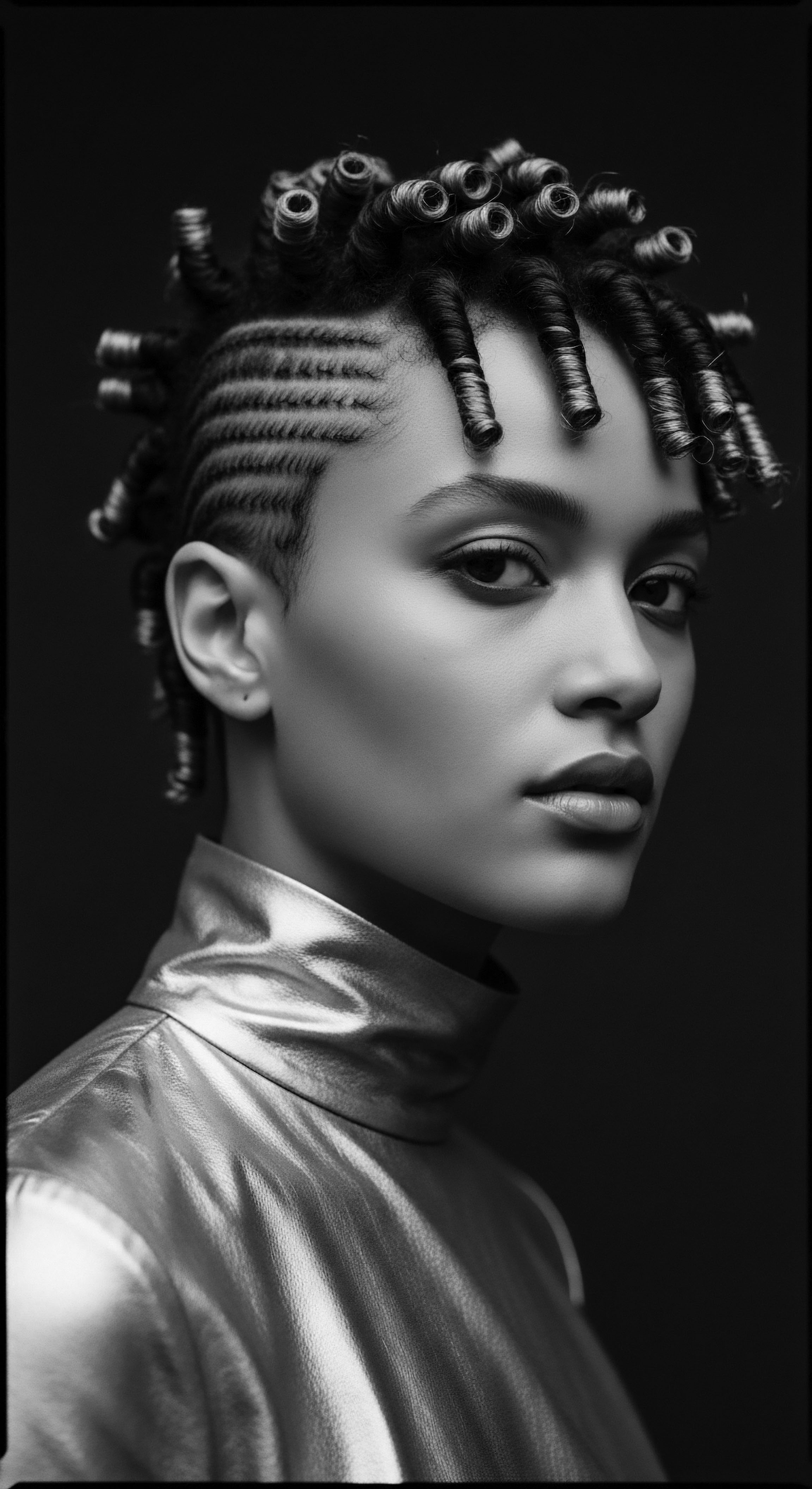
Reclaiming the Crown ❉ Decolonizing Beauty Standards
The contemporary understanding of African Beauty involves a critical re-evaluation of inherited beauty standards and a conscious effort to decolonize the aesthetic gaze. This intellectual endeavor involves dismantling the pervasive notion that straight hair is the default or superior texture, and instead, elevating the unique characteristics of coils, kinks, and waves. Scholars in critical race theory and Black feminist thought have extensively analyzed how hair discrimination functions as a form of racial bias, perpetuating systemic inequalities in education, employment, and social acceptance. The CROWN Act (Creating a Respectful and Open World for Natural Hair) in the United States, for instance, represents a legislative effort to combat this discrimination, acknowledging the deep historical and cultural roots of hair-based prejudice.
This reclamation is not merely about aesthetics; it is a profound act of self-love, cultural affirmation, and ancestral honoring. It acknowledges that the African Beauty inherent in textured hair is a birthright, a legacy that connects individuals to a vast and resilient lineage. The academic study of this phenomenon reveals the complex interplay of personal agency, collective identity, and structural forces in shaping perceptions of beauty.
It calls for an expanded understanding of beauty that celebrates diversity, respects heritage, and empowers individuals to wear their natural crowns with unapologetic pride. The ongoing dialogue within academic circles contributes to a deeper societal appreciation for the nuanced meaning of African Beauty, fostering environments where all hair textures are recognized for their intrinsic splendor and cultural value.
- Ethnobotanical Wisdom ❉ Scholarly work examines the traditional knowledge of plants and their uses in hair care, validating ancestral practices through scientific analysis of their chemical properties.
- Sociological Impact ❉ Researchers investigate the social and psychological effects of hair discrimination and the positive impact of natural hair movements on self-esteem and cultural pride.
- Cultural Semiotics ❉ Academic studies decode the symbolic meanings embedded in traditional African hairstyles and their evolution within diasporic communities as expressions of identity and resistance.
- Decolonization of Aesthetics ❉ Critical theories analyze how Western beauty standards have historically marginalized textured hair and advocate for a re-centering of African and diasporic aesthetics.

Reflection on the Heritage of African Beauty
The journey through the intricate layers of African Beauty, from its elemental biology to its profound academic interpretations, culminates in a heartfelt reflection on its enduring heritage. This exploration, deeply infused with the ‘Soul of a Strand’ ethos, reveals that African Beauty is not a static concept confined to historical texts or scientific classifications. Instead, it lives and breathes within every coil, every kinky strand, and every wave, carrying the echoes of ancestral wisdom and the vibrant pulse of contemporary identity. It is a continuous narrative, a testament to the resilience of spirit that has allowed a people to transform challenge into an enduring legacy of aesthetic and cultural richness.
The profound connection between textured hair and the collective memory of African and mixed-race communities stands as a beacon of self-acceptance and cultural pride. This heritage calls upon us to recognize the beauty that has always existed, often obscured by external impositions, and to honor the ingenuity of those who preserved traditional practices against all odds. It invites a deeper communion with the natural world, understanding that the very ingredients used for centuries—the shea, the oils, the herbs—are not merely topical treatments but conduits to a holistic well-being rooted in ancestral reverence. The act of caring for textured hair, then, becomes a sacred ritual, a quiet conversation with generations past, a profound affirmation of one’s place within a rich and unbroken lineage.
As we look forward, the legacy of African Beauty continues to unfold, shaping futures and inspiring new expressions of identity. It is a dynamic force, constantly adapting yet always retaining its core essence ❉ the celebration of natural hair as a symbol of strength, dignity, and unparalleled artistry. This living library of Roothea serves as a perpetual reminder that the heritage of textured hair is not just a story of the past; it is a vibrant, evolving saga that empowers individuals to wear their crowns with an understanding of the profound history and spiritual significance woven into every strand. The beauty of African hair, in its myriad forms, remains an enduring testament to the boundless creativity and spirit of its people.
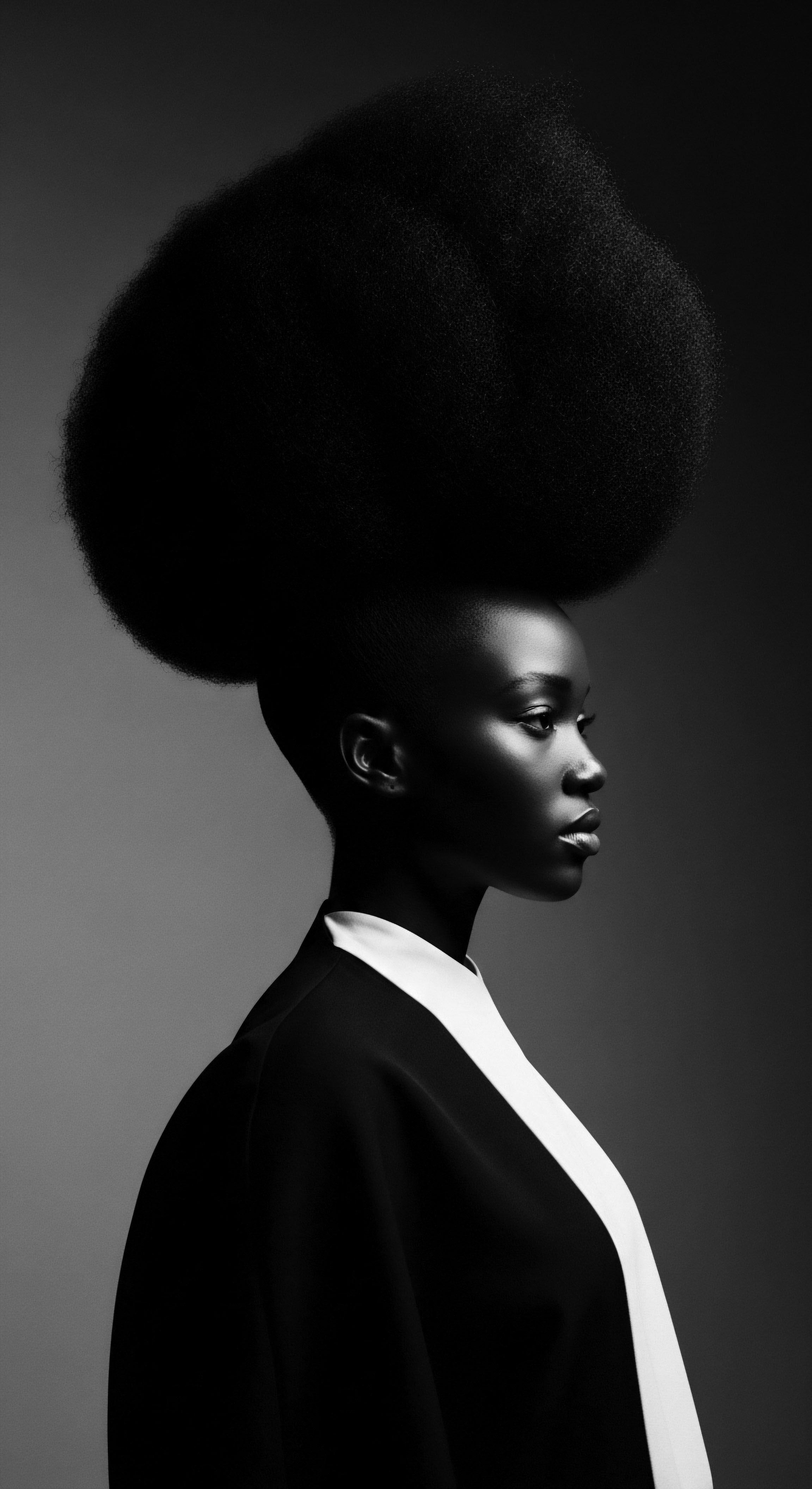
References
- Byrd, A. D. & Tharps, L. D. (2001). Hair Story ❉ Untangling the Roots of Black Hair in America. St. Martin’s Press.
- Mercer, K. (1994). Welcome to the Jungle ❉ New Positions in Cultural Studies. Routledge.
- Akbar, N. (1996). Light from Ancient Africa. New Mind Productions.
- hooks, b. (1992). Black Looks ❉ Race and Representation. South End Press.
- Opoku, A. A. (1978). African Traditional Religion ❉ A Glossary. Ghana Publishing Corporation.
- Cole, C. M. (2009). Performing the African Diaspora ❉ Contemporary Black Acts in Theory and Practice. Routledge.
- White, A. (2012). Reforming the Body ❉ Religion, Community and the Female Body in Contemporary Black Women’s Writing. Palgrave Macmillan.
- Small, S. (2016). Hair, Race, and African American Culture. Routledge.
- Gates, H. L. (1988). The Signifying Monkey ❉ A Theory of African American Literary Criticism. Oxford University Press.
- Thompson, R. F. (1983). Flash of the Spirit ❉ African and Afro-American Art and Philosophy. Vintage Books.
